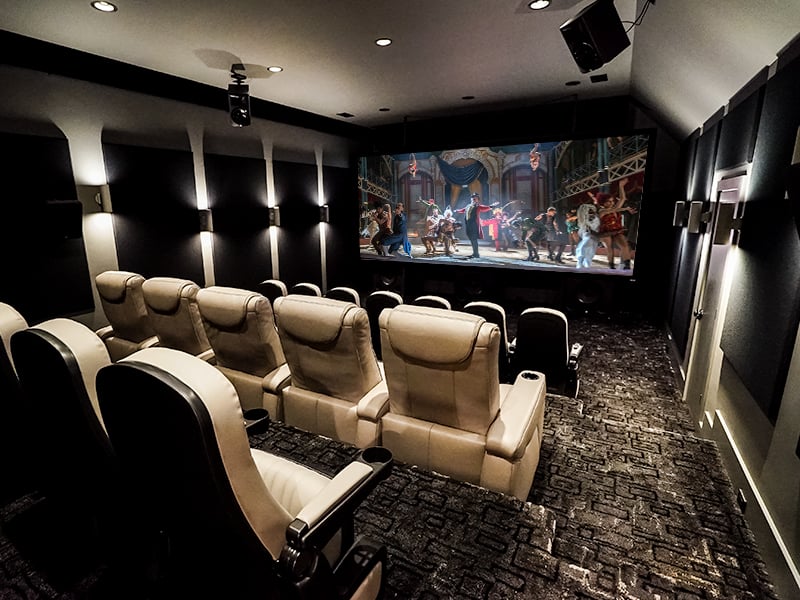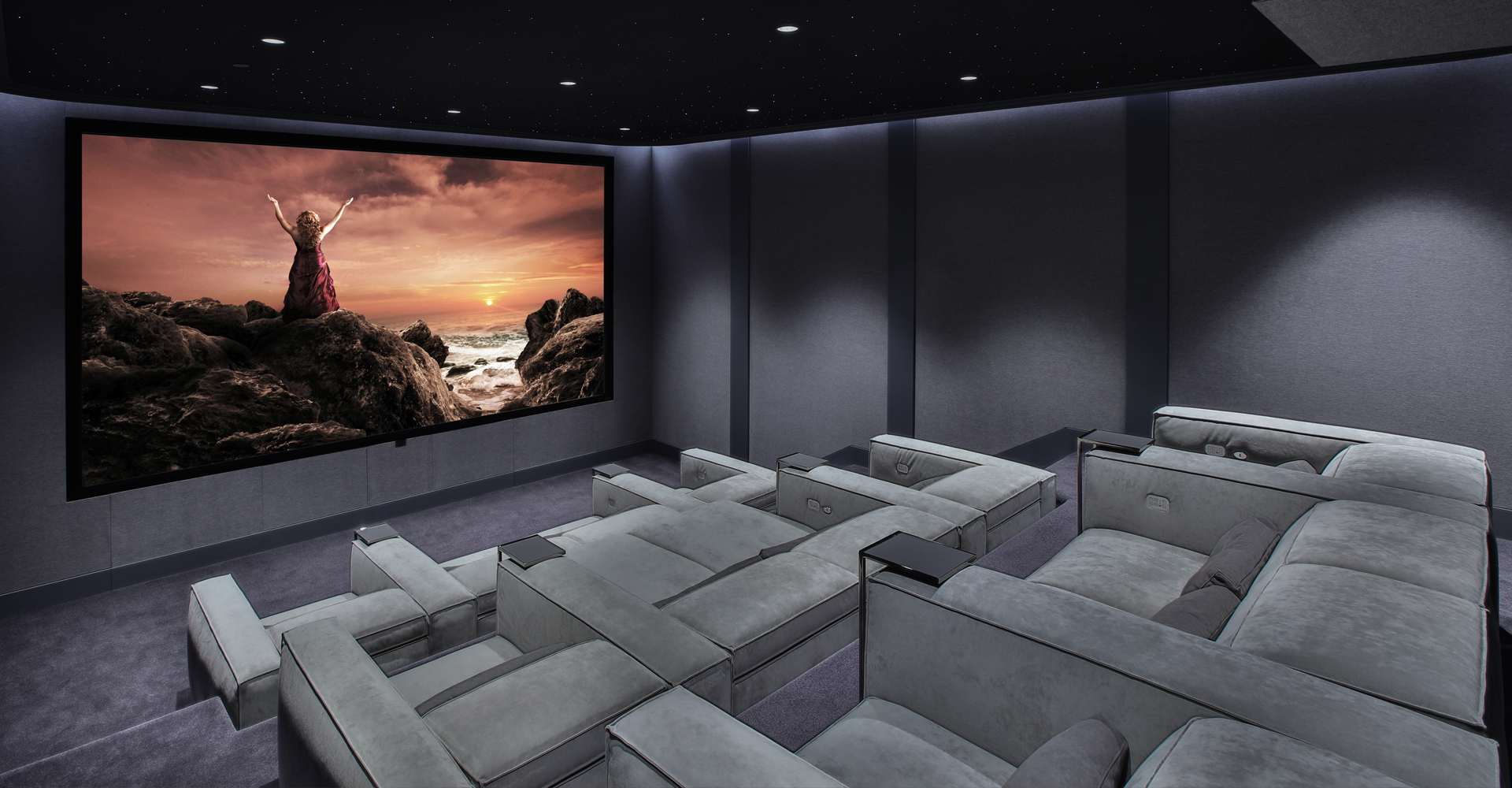Expert Home Theater Tampa Design for Every Budget
Expert Home Theater Tampa Design for Every Budget
Blog Article
Home Theater 101: Everything You Required to Know for a Cinematic Experience in your home
Developing a home theater that measures up to the cinematic experience of an industrial theater involves careful factor to consider of numerous parts, including screen choice, audio systems, and space format. Each component plays a critical function in attaining the wanted ambiance and functionality. Whether you are considering the excellent screen size or the intricacies of surround sound, comprehending these basics is necessary. As we discover these critical components, it becomes noticeable that the options made can considerably affect your total viewing experience, leaving one to ponder just how these decisions will shape your individual cinema.
Choosing the Right Screen
When establishing a home theater, choosing the appropriate display can make or damage the seeing experience - tampa home theater installation. The display works as the focal point of your arrangement, affecting photo high quality, checking out angles, and overall visual. Secret elements to consider consist of display type, resolution, and dimension
Initially, figure out the proper screen dimension based on your space dimensions and seating range. A general standard is to rest roughly 1.5 to 2.5 times the angled screen dimension for optimal watching. Next, select in between numerous screen kinds, such as fixed-frame, motorized, or retractable displays, each offering distinct advantages. Fixed-frame displays commonly supply the most effective photo top quality, while mechanized alternatives enable adaptability precede use.
Resolution is one more critical element. For an absolutely immersive experience, think about a display made for 4K or also 8K content, ensuring sharpness and clarity. In addition, consider the screen's gain, which impacts illumination and contrast; a higher gain can improve illumination in well-lit rooms, while a lower gain might be extra ideal for darker settings.
Choosing Audio Equipment
Audio devices is an important part of any home theater system, substantially improving the total watching experience. The option of audio equipment can figure out the deepness, quality, and immersion of audio, crucial for creating a cinematic atmosphere.
When choosing audio devices, take into consideration a surround audio system, which typically consists of a receiver, multiple audio speakers, and a speaker. A 5.1 or 7.1 network system is suggested, where the initial number stands for the audio speakers and the second the subwoofer, supplying an immersive soundscape. The receiver is the heart of the system, handling audio and video signals, and need to support modern layouts like Dolby Atmos for an enhanced spatial experience.
Quality speakers are necessary; try to find designs that provide a balanced noise account with great bass reaction. Floor-standing speakers can generate richer audio, while shelf options conserve area. Furthermore, consider cordless alternatives for ease of installment, although wired systems usually supply exceptional performance.

Optimal Seating Plans
Creating an excellent home cinema experience pivots substantially on ideal seating plans. The setup of seats plays a critical role in both comfort and seeing quality, directly influencing the overall motion picture experience.
First, think about the display dimension and checking like it out distance. A common standard is to position seats at a distance approximately 1.5 to 2.5 times the angled size of the display. This guarantees an immersive experience without straining the eyes.
Following, elevation is essential. The back rows ought to be greater than the front to prevent obstructions click this link if your seating is in a tiered format. For level seating, make certain that the front row is not as well close to the screen, and that every person has a clear line of vision.
Moreover, think about the arrangement in terms of social characteristics. Group seats can enhance the public experience, while individual seats might be preferred for individual watching.

Last but not least, prioritize convenience with ergonomic seats that supports prolonged watching durations. Integrating reclining chairs or supported seats can considerably boost the experience, making the home theater a favored location for both entertainment and relaxation.
Lighting and Setting
Effective lighting and atmosphere are crucial components of a well-designed home cinema, as they significantly influence the checking out experience. The appropriate lights can enhance the cinematic feel, while bad options can diminish it. For optimal results, take into consideration a split illumination approach that includes ambient, task, and accent lighting.
Ambient lighting offers basic lighting, making certain that the room is not completely dark, which can strain the eyes. Dimmer buttons are highly recommended, enabling modifications based on the content being seen. Task illumination, such as wall sconces or floor lamps, provides functional illumination for activities like reading or browsing the room without interfering with the total ambience.
Accent illumination can be utilized to highlight architectural attributes or develop focal points, adding depth and passion to the space. LED strip lights behind screens or along racks can supply a subtle radiance that improves the visual experience without frustrating the customer.

Wiring and Installation Tips
A well-planned circuitry arrangement is critical for attaining optimum performance in your home theater system. Proper circuitry not just makes sure top notch audio and video signals yet likewise enhances the total visual of your space. Begin by drawing up your format, determining where each component will certainly be put, including your screen, audio speakers, and receiver.
When choosing cables, focus on premium, appropriately determined electrical wiring to reduce signal loss. HDMI wires must be used for video clip connections, while audio speaker wire must match the specifications of your audio speakers and amplifier. Go with in-wall ranked cable televisions to follow security criteria and preserve a tidy look.

Final Thought
In recap, developing an extraordinary home movie theater experience requires mindful factor to consider of numerous components, consisting of screen selection, audio equipment, seating plans, lighting, and wiring. By focusing on these elements, a cinematic ambience can be successfully replicated, allowing for immersive seeing experiences that equal standard cinema setups.
Creating a home theater that equals the cinematic experience of a commercial theatre entails cautious consideration of several components, consisting of screen choice, audio systems, and room design.When establishing up a home cinema, selecting the ideal display can make or break the checking out experience. Next off, select in between different screen kinds, such as fixed-frame, mechanized, or retracting screens, each offering distinct advantages. For a genuinely immersive experience, think about a display developed for 4K or also 8K material, guaranteeing intensity and clearness.In recap, producing an exceptional home movie theater experience calls for careful consideration of different elements, consisting of screen option, audio equipment, seating setups, lighting, and electrical wiring.
Report this page